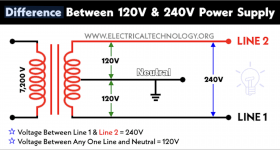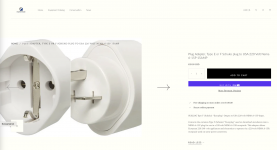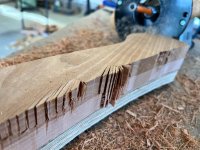This feels a bit like a confession but here goes. For many years, I have been intrigued by the possibility of using European Festool tools (yeah...the ones that aren't adapted to North America) at home in USA using a voltage step up transformer. I never pulled the trigger on this experiment but perhaps some of you have and have insights. I have a 5000W step up transformer which has worked with several European appliances including a hair drier that demands 2000-2400 watts with no issues. In fact, that is exactly what these things are sold to do. So, provided that the tools can accommodate the 60 Hz rather than the 50 Hz frequency (which almost all seem to be able to accommodate from my research) this seems like a no problem situation.
So....then comes along the Mafell LO55 router. I have several festool routers and like them but this one had some very intriguing features so I went ahead and took the plunge. When plugged in the illumination light goes on and all features/controls seem to work but it gives me an error (solid red lights) when turning on the motor (which does not start). This error is supposed to be reversible but the manual for the Mafell is scanty to say the least. So now I am stuck. I don't know if this is just a faulty machine, a machine that is exquisitely sensitive to input frequency, or what else. It only pulls 1100 watts supposedly which is way under the limit for the transformer and about half of what the hair drier pulls (which works). I can't try a separate copy of the router naturally. I can't plug it into a standard European Mains outlet and my options for service are limited. So a few questions:
1. Has anyone tried using a European router (like a festool) using a voltage step-up transformer and what was your experience? I'm having a hard time reconciling why this wouldn't work since this is exactly what these transformers are designed to do.
2. Has anyone had this problem with the Mafell LO55 in Europe on standard Mains voltage who might be able to help me troubleshoot?
Thanks in advance.
So....then comes along the Mafell LO55 router. I have several festool routers and like them but this one had some very intriguing features so I went ahead and took the plunge. When plugged in the illumination light goes on and all features/controls seem to work but it gives me an error (solid red lights) when turning on the motor (which does not start). This error is supposed to be reversible but the manual for the Mafell is scanty to say the least. So now I am stuck. I don't know if this is just a faulty machine, a machine that is exquisitely sensitive to input frequency, or what else. It only pulls 1100 watts supposedly which is way under the limit for the transformer and about half of what the hair drier pulls (which works). I can't try a separate copy of the router naturally. I can't plug it into a standard European Mains outlet and my options for service are limited. So a few questions:
1. Has anyone tried using a European router (like a festool) using a voltage step-up transformer and what was your experience? I'm having a hard time reconciling why this wouldn't work since this is exactly what these transformers are designed to do.
2. Has anyone had this problem with the Mafell LO55 in Europe on standard Mains voltage who might be able to help me troubleshoot?
Thanks in advance.



